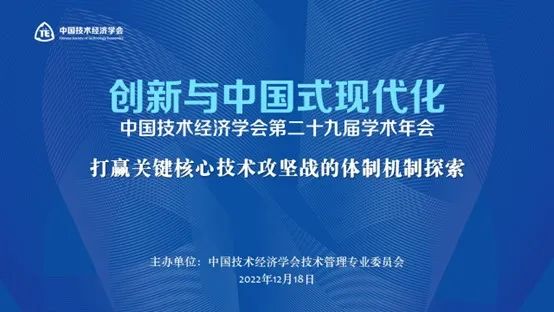
On December 18th, during the 29th Annual Conference of China Society of Technology Economics, sponsored by the Technical Management Committee of China Society of Technical Economics, and organized by the Research Center of Technological Innovation of Tsinghua University, the sub-forum activity was themed "Exploration on the system and mechanism of Winning the tough battle of Key and core Technologies". A total of more than 3,000 people watched the forum through the online form of China National Knowledge Network.
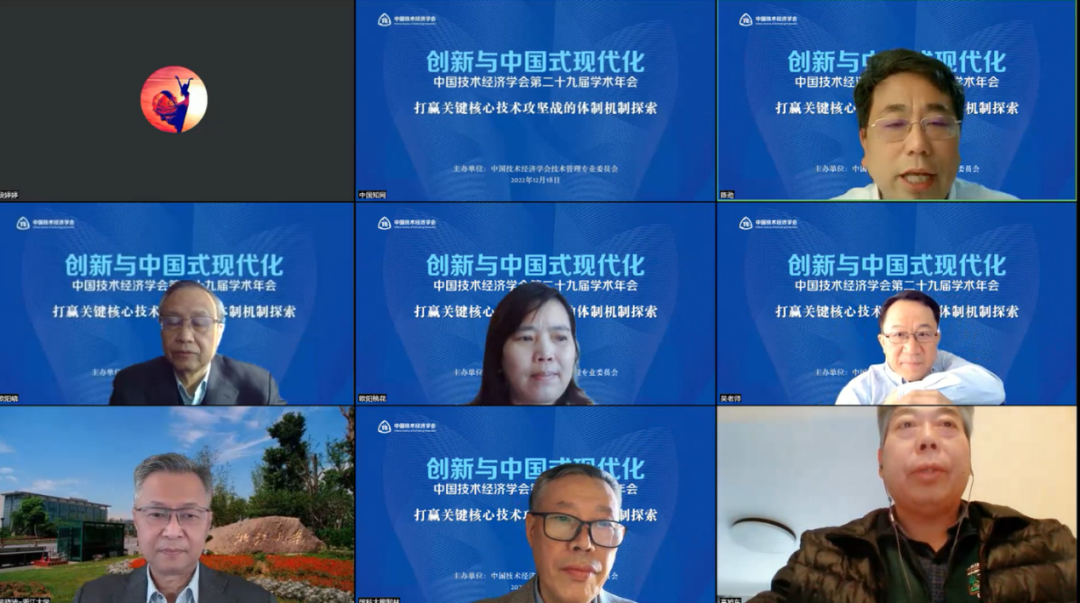
The forum was presided over by Professor Chen Jin, Chairman of the Technical Management Committee of China Society of Technical Economics and Director of the Research Center of Technological Innovation of Tsinghua University. Professor Wu Xiaobo, Director of the Department of Social Sciences of Zhejiang University, Professor Ouyangyao, former vice president of Hunan Normal University, Professor Liu Xielin, Management College of the University of Chinese Academy of Sciences, Professor Gao Xudong, deputy director of Research Center of Technological Innovation of Tsinghua University, Professor Ouyang Taohua, School of Economics and Management of Beihang University, Professor Wu Jinxi, Director of the Research Center for Strategic Emerging Industries at the School of Humanities and Social Sciences of Tsinghua University, Professor Chen Jin, director of the Research Center of Technological Innovation of Tsinghua University and other experts and scholars made wonderful presentations on the topic of "How to remove institutional barriers to scientific and technological innovation, Strengthen originality and lead scientific and technological breakthroughs, and resolutely win the battle for key and core technologies".
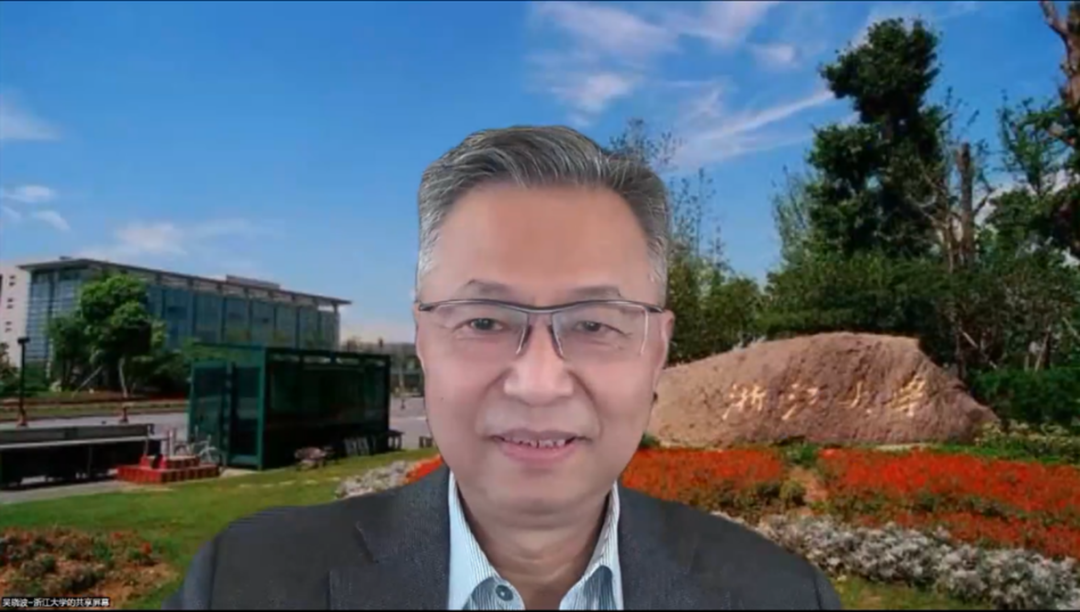
Professor Wu Xiaobo
Professor Wu Xiaobo made a wonderful speech on the topic of "Building the 'Seven Integrated' new National innovation System around the key core technology breakthrough". On the basis of summarizing the advanced experience of developed countries, he proposed that our traditional national innovation system only pay attention to the government, industry, university and research is not enough, and should add users, venture capital and high-level intermediary institutions. Then, it is proposed to form a new entrepreneurial ecological governance system of heptreponema in an innovation-oriented country.
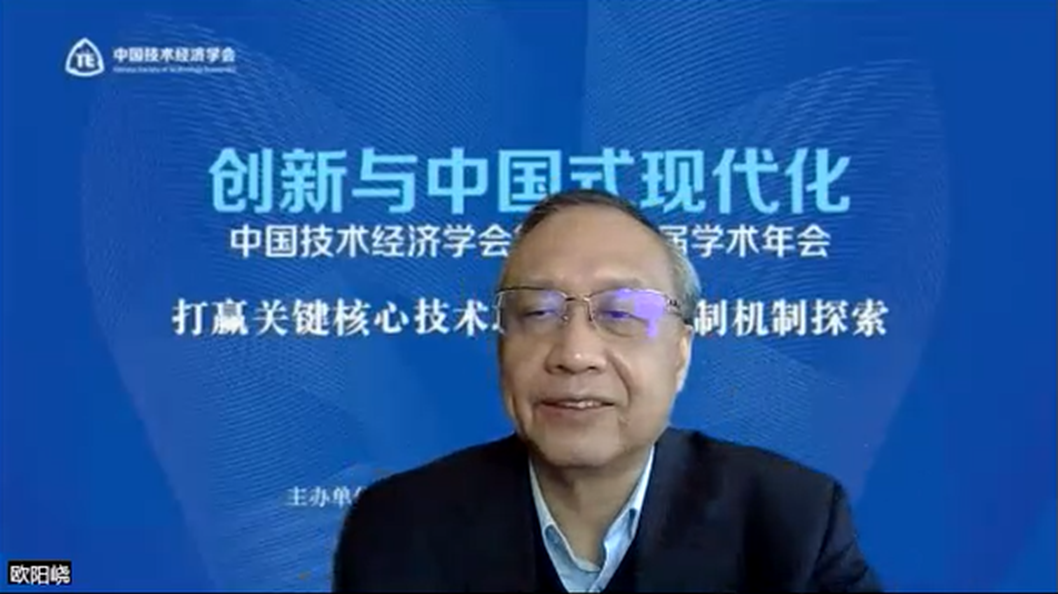
Professor Ouyangyao
Professor Ouyang named "the national system of technology innovation and its realization mechanism in China". Based on summarizing the characteristics of traditional national system, he proposed that a new national system should strengthen the transformation (balance) from national defense construction to industrial development, pay attention to the transformation of temporary organization and long-term cooperative organization, and pay attention to the transformation of planning system into market economy. In addition, we need to strengthen the combination of industrial and national defense, long and short sectors, market and government, and tight and loose sectors.
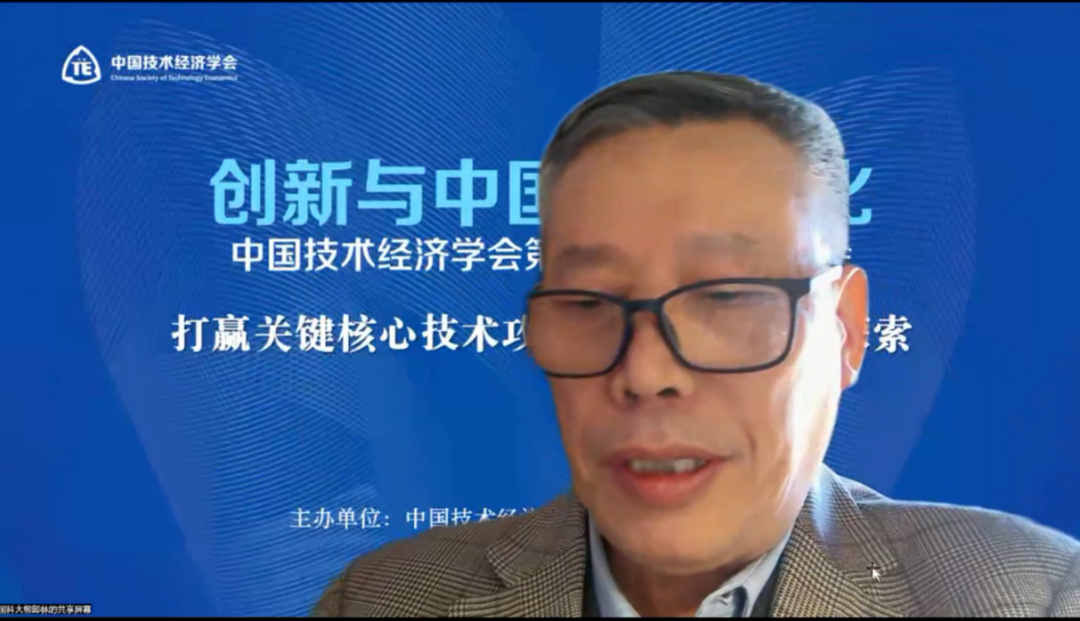
Professor Liu Xielin
With the title of "From the Construction of Innovation Ecosystem to the Formation of Supply of industrial core Technologies", Professor Liu Xielin believes that the formation of new supply capacity depends on the construction of national innovation ecosystem. Combining with the experience of ASML in the Netherlands, he points out that it is effective to build a high-level innovation ecosystem. In this process, entrepreneurs should adhere to long-termism and pay attention to dynamic capacity building. Focus on the diversity of technology, while strengthening the integration with non-mainstream users and industry-university-research, including the integration with international innovation networks.
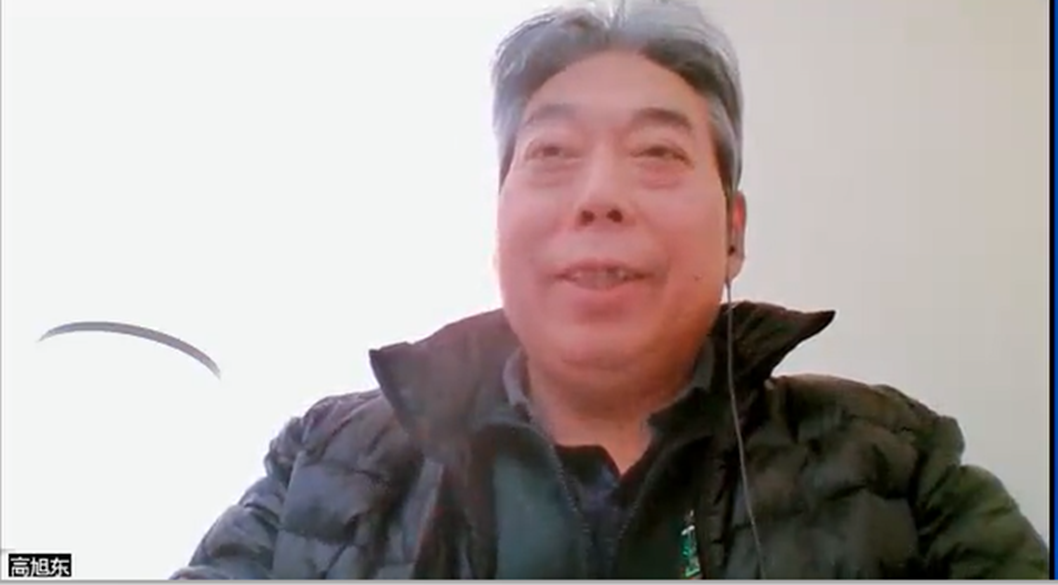
Professor Gao Xudong
Professor Gao Xudong, with the title of "Achieving Key core technology Breakthrough and scientific and technological self-reliance in the innovation system reconstruction".He proposed that we should pay more attention to the construction of enterprise-led innovation system, and combined with the successful experience of many domestic enterprises, pointed out that we should work hard in the personnel team and cadre team. At the same time, it believes that the government should carry out the layout of major engineering projects, reform the talent training of colleges and universities, and form the mechanism of government-industry-university-research interaction to reconstruct the national innovation system.
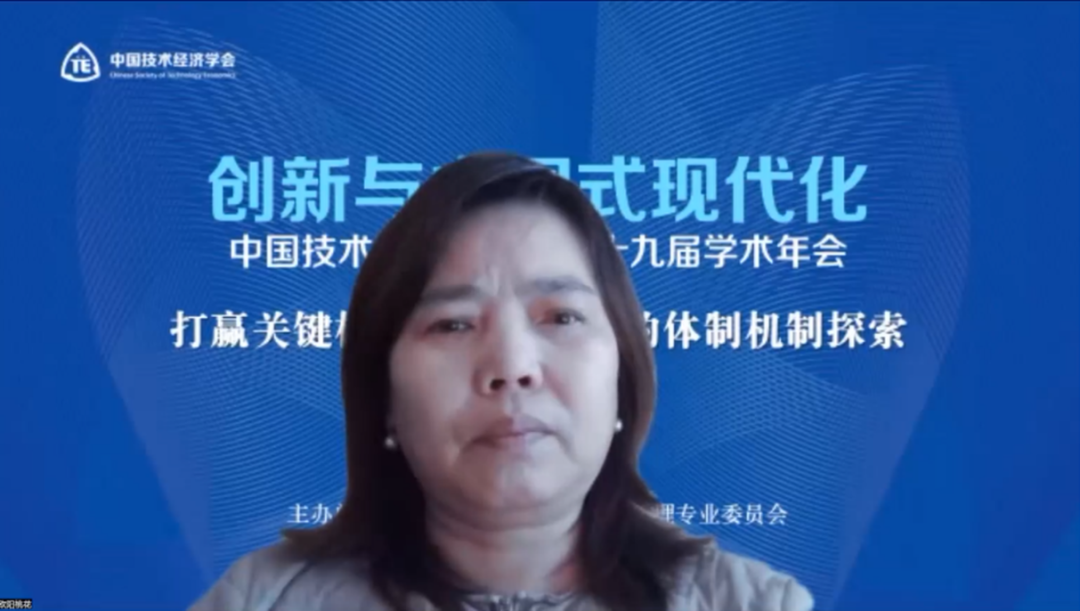
Professor Ouyang Taohua
Professor Ouyang Taohua, with the title of "Research on the Mechanism of Key core Technologies of latecomer Enterprises catching up with and catching up with", combined with the research and development of Chinese mainline aircraft including UAV and market shield machine, pointed out that innovation should be classified, complex systems and major projects more emphasis on the forward design, key design emphasizes the forward design and the method of formation. In addition, it should be divided into the catch-up type and the leapfrog type, and emphasize new mechanisms during the catch-up period.
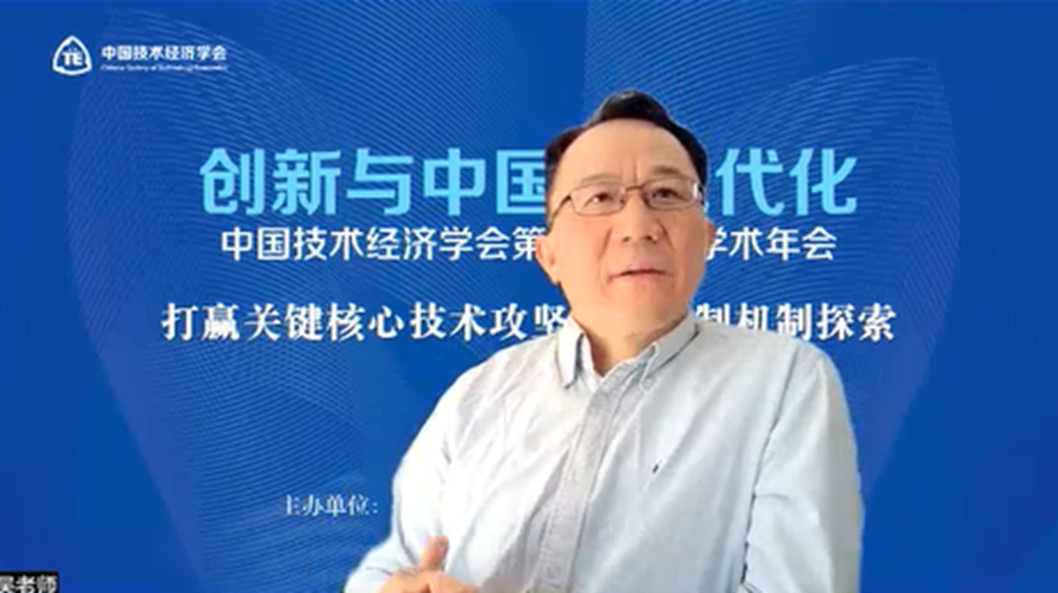
Professor Wu Jinxi
Professor Wu Jinxi presented the report with the title of "Four strategic Issues in Tackling Key Core Technologies". The first is about how to view the key core technology of "choke" dialectically in the long run. The second is how to solve the problem of the key core technology from four strategic aspects. He proposed that the first is the independent innovation ecological construction of the second curve, the second is "WTTO", the third is who will solve "456", and the fourth is the market mechanism, entrepreneurship and small business survival space.
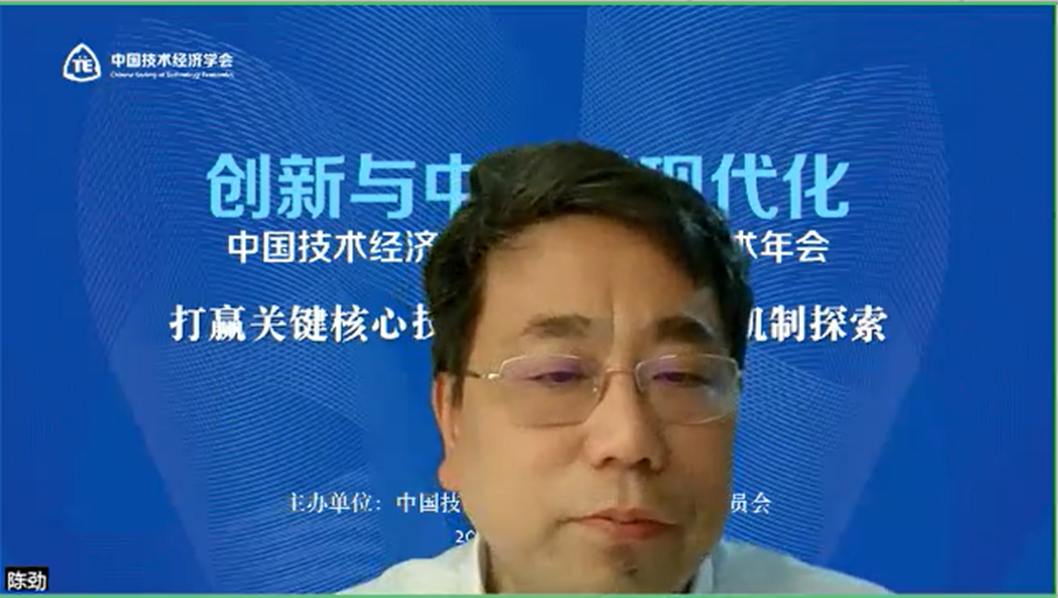
Professor Wu Jinxi
Professor Chen Jin titled "Making good use of the new nationwide system to win the battle of Key core technologies" and pointed out that the Party's leadership should be strengthened and mission-driven innovation strengthened; At the same time, a high-level innovation consortium should be formed by relying on core platforms such as the national laboratory system, national research institutions and national technology innovation centers. Different from the traditional national sports system, the new national sports system should integrate innovative resources in a dynamic way, avoid organizational rigidity, and give further play to the dynamic innovation network driven by digital technology.


